Struggling with groundhogs destroying your garden or property? Our comprehensive guide reviews the best groundhog traps available, providing expert advice on selecting, setting, and using humane traps to effectively manage these persistent diggers. We’ve done the research so you can quickly choose the right solution for your groundhog problem.
Quick Picks: Best Groundhog Traps

Editor’s Choice
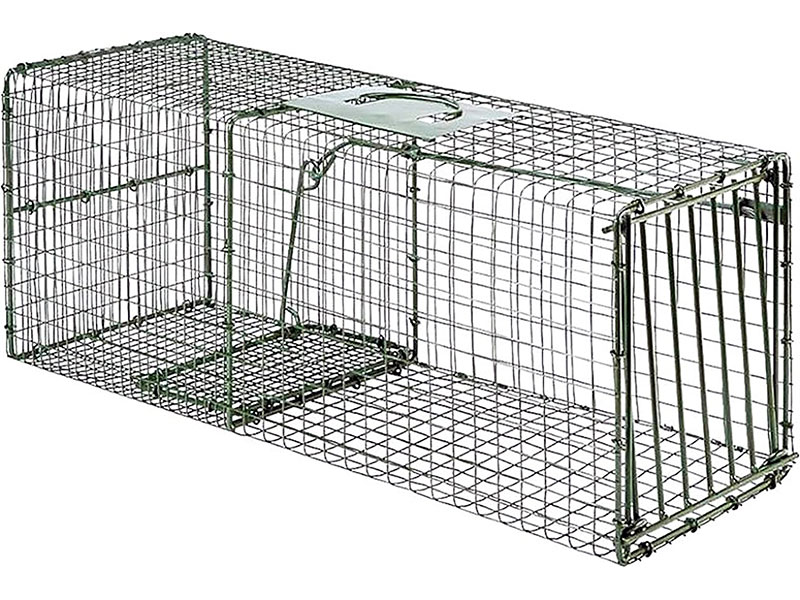
People’s Choice
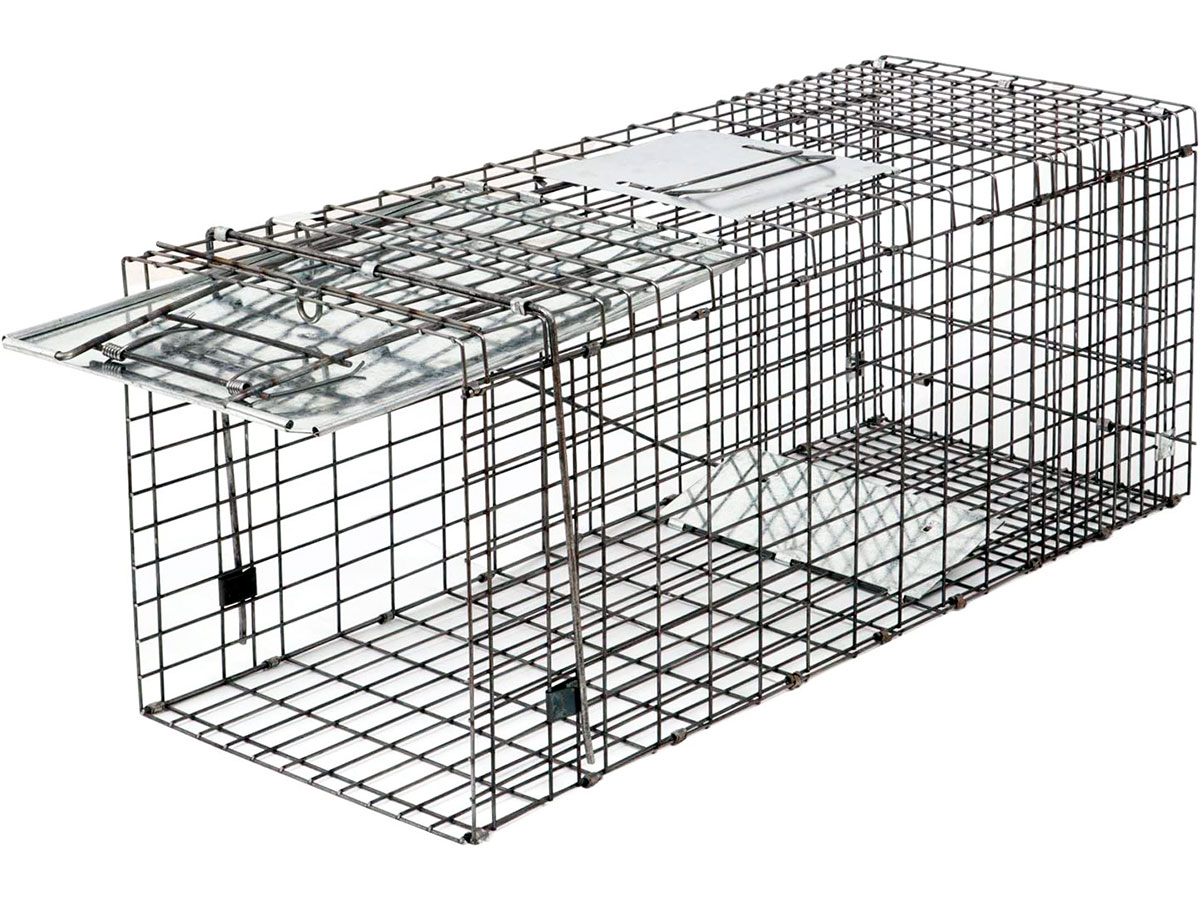
Best Budget
- Understanding Groundhog Problems
- Top Groundhog Traps Compared (2025)
- Best Groundhog Traps Reviewed
- Essential Groundhog Trapping Guide
- Groundhog Bait Selection Guide
- Proper Trap Placement Techniques
- After the Capture: Humane Relocation
- Preventing Future Groundhog Problems
- Effectiveness Comparison of Groundhog Control Methods
- Frequently Asked Questions
- Conclusion
Understanding Groundhog Problems
Groundhogs (also known as woodchucks, whistle pigs, or marmots) are large burrowing rodents that can cause significant damage to gardens, lawns, and even structural foundations. These herbivores can consume up to 1.5 pounds of vegetation daily, decimating carefully tended gardens in short order.

Property Damage
Extensive burrow systems can undermine foundations, driveways, and retaining walls, potentially leading to costly structural damage.
Garden Destruction
Groundhogs have voracious appetites for vegetables, fruits, and ornamental plants, often destroying entire gardens in just days.
Safety Hazards
Large burrow entrances and tunnels create trip hazards for people and can injure livestock or damage farm equipment.
Humane trapping is one of the most effective and ethical methods for managing groundhog problems, especially in residential areas where other control methods may not be appropriate or legal.
Top Groundhog Traps Compared (2025)
| Trap Model | Size | Design | Material | Weight | Special Features | Best For |
|---|---|---|---|---|---|---|
| Havahart 1045 | 36″ x 10″ x 12″ | Two-Door | Galvanized Steel | 15.2 lbs | Carrying handle, smooth internal edges | Professional use, high-traffic areas |
| Duke Heavy Duty | 30″ x 12″ x 12″ | One-Door | Steel Mesh | 12.4 lbs | Green camouflage color, protected bait area | Wooded areas, experienced users |
| HomGarden | 32″ x 12″ x 12″ | One-Door | Steel Alloy | 8.5 lbs | Pre-assembled, sensitive trigger | Beginners, occasional use |
Best Groundhog Traps Reviewed
Havahart 1045 Two-Door Cage Trap
Best OverallHow Does It Work
How to Use
- Position the trap along known groundhog paths or 5-10 feet from an active burrow entrance
- Bait with fresh fruits like cantaloupe (placed in the center on or near the trigger plate)
- Camouflage the trap with natural materials like grass or leaves
- Check the trap at least twice daily to minimize stress to captured animals
- Wear gloves when handling to prevent transferring human scent
- Two-door design increases capture success rate by up to 40%
- Made in the USA with rust-resistant galvanized steel for durability
- Smooth internal edges prevent animal injuries during containment
- Sturdy carrying handle makes transportation safe and easy
- Solid doors create a darker environment that calms captured animals
- Higher price point than single-door alternatives
- Slightly heavier than some competing models
- May require more careful setup due to dual-door mechanism
Duke Company Heavy Duty Large Cage Trap
Most DurableHow Does It Work
How to Use
- Place trap on level ground near active burrows or along groundhog trails
- Position with the open door facing the direction groundhogs typically approach from
- Bait with fresh vegetables or fruits placed at the rear of the trap
- Cover the floor of the trap with soil or leaves to make it appear more natural
- Check daily and wear gloves when handling to minimize human scent transfer
- Heavy-duty construction withstands repeated use and resist damage
- Green coloration provides excellent camouflage in vegetated areas
- Protected bait area prevents animals from stealing bait without entering
- Larger internal dimensions accommodate even full-grown groundhogs
- Strong spring mechanism ensures door closes quickly and securely
- Single-door design may be less effective than dual-door models
- Door design makes it difficult to place food containers behind the trigger plate
- Heavier than some competing models, which may affect portability
HomGarden Humane Catch & Release Large Cage Trap
Best BudgetHow Does It Work
How to Use
- Set the trap near active burrows or along paths where groundhog activity has been observed
- Bait with fresh fruits or vegetables placed at the far end of the trap
- Cover the sides and top with vegetation to make it appear more natural
- Ensure the trap is placed on level ground to prevent tipping or misalignment
- Check regularly and wear gloves when handling to minimize human scent
- Excellent value for budget-conscious homeowners
- Arrives pre-assembled, eliminating complicated setup
- Lightweight design improves portability
- Sensitive trigger mechanism reduces failed capture attempts
- 30-day satisfaction guarantee provides purchase confidence
- Less durable than premium models with continued use
- May develop rust over time with outdoor exposure
- Less detailed instructions compared to other brands
- Single-door design may be less effective than dual-door options
Essential Groundhog Trapping Guide
Successful groundhog trapping requires proper technique and patience. Follow these expert guidelines to maximize your chances of humanely capturing these wary creatures:
Best Trapping Season
Late spring through early fall is optimal for groundhog trapping, when they’re actively feeding and most receptive to bait. Avoid winter months when groundhogs hibernate.
Ideal Placement
Position traps along established groundhog paths or 5-10 feet from active burrow entrances, placing them on solid, level ground to prevent tipping.
Trapping Schedule
Set traps in early morning or late afternoon when groundhogs are typically most active. Check traps at least twice daily to prevent unnecessary stress to captured animals.
Step-by-Step Groundhog Trapping Process
- Select the right trap sizeChoose a trap at least 30″ long and 10″ high to comfortably accommodate adult groundhogs. Smaller traps may not be effective for full-grown animals.
- Identify optimal trap locationsLook for active burrows (identifiable by fresh dirt mounds), damage sites, or visible runways where groundhogs travel regularly. Set traps in these high-activity areas.
- Camouflage your trapGroundhogs are naturally cautious. Cover the trap with natural materials like leaves, grass, or branches to make it blend with the surroundings, but ensure the covering doesn’t interfere with the door mechanism.
- Use effective baitsPlace high-value foods like cantaloupe, fresh string beans, sweet corn, or lettuce in the appropriate position to force the groundhog to fully enter the trap.
- Monitor regularlyCheck traps at least twice daily (morning and evening). Never leave animals in traps for extended periods, especially in extreme weather conditions.
- Handle captures properlyApproach captured groundhogs calmly and cover the trap with a light blanket to reduce stress during transport. Relocate at least 5 miles away in suitable habitat with natural cover.
Groundhog Bait Selection Guide
The right bait can significantly improve your trapping success. Groundhogs are primarily herbivores with particular preferences for certain fruits and vegetables.
| Bait Type | Effectiveness | Best Season | Preparation | Placement |
|---|---|---|---|---|
| Cantaloupe | Excellent | All Seasons | Cut into 2-inch chunks, include rind | Center of trap or beyond trigger plate |
| Fresh Green Beans | Very Good | Summer | Whole pods, fresh | Scattered through trap |
| Sweet Corn | Very Good | Summer/Fall | Husked, half ear | Far end of trap |
| Lettuce | Good | Spring/Summer | Fresh whole leaves | Trail leading into trap |
| Strawberries | Good | Spring/Summer | Whole berries, slightly crushed | Center and rear of trap |
| Commercial Groundhog Lure | Very Good | All Seasons | Per package instructions | Applied to vegetable bait |
Proper Trap Placement Techniques
Where you place your trap is just as important as the type of trap and bait you use. Strategic placement significantly increases your chances of successfully capturing groundhogs.
Optimal Groundhog Trap Placement Locations
- Near active burrow entrances – Position traps 5-10 feet from recently used burrow openings (identifiable by fresh dirt mounds and clear entrances)
- Along established travel paths – Look for worn trails in grass or dirt that groundhogs use to move between feeding areas and burrows
- Adjacent to damaged gardens – Place traps near areas showing evidence of groundhog feeding damage
- Between cover and food sources – Position between burrow areas and gardens or fields where groundhogs feed
- Against fences or walls – Groundhogs often travel along barriers, making these effective trap locations
After the Capture: Humane Relocation
Once you’ve successfully trapped a groundhog, proper handling and relocation is essential for both humane treatment of the animal and preventing its return to your property.
- Approach cautiouslyGroundhogs can become stressed and aggressive when trapped. Approach slowly and cover the trap with a light blanket to calm the animal.
- Transport properlyKeep the trap level during transport to prevent injuring the animal. Avoid excessive heat by keeping the trap out of direct sunlight during transport.
- Select an appropriate release locationChoose an area at least 5 miles from your property that provides suitable habitat with natural cover and food sources. Woodlands with grassy clearings are ideal.
- Release safelyAt the release site, position the trap with the door facing away from you. Open the door and step back, allowing the groundhog to exit on its own terms.
- Clean the trap thoroughlyAfter relocation, clean and disinfect the trap to remove scents that might deter future captures. Use a mild bleach solution (1 part bleach to 9 parts water) followed by thorough rinsing.
Preventing Future Groundhog Problems
After successfully removing groundhogs from your property, take these preventative measures to discourage their return:
Install Barriers
Create L-shaped fencing that extends 12 inches below ground and bends outward at a 90-degree angle for another 12 inches to prevent burrowing. Above-ground fencing should be at least 3 feet high.
Apply Repellents
Use commercial groundhog repellents containing predator urine or natural deterrents around the perimeter of your property. Reapply according to manufacturer instructions.
Modify Habitat
Remove brush piles, tall grass, and other potential shelter. Fill abandoned burrows with a mixture of soil and gravel after confirming they’re unoccupied.
Predator Presence
If you have dogs, allow them to regularly patrol the property. Their scent and presence can deter groundhogs from establishing new burrows.
Effectiveness Comparison of Groundhog Control Methods
| Control Method | Effectiveness | Humaneness | Cost | Difficulty | Long-Term Value |
|---|---|---|---|---|---|
| Live Trapping | High | High | $$ | Medium | High |
| Exclusion Fencing | Very High | Very High | $$$ | High | Very High |
| Repellents | Medium | High | $$ | Low | Medium |
| Habitat Modification | Medium | High | $ | Medium | High |
| Flooding Burrows | Low | Low | $ | Medium | Very Low |
| Professional Removal | Very High | Varies | $$$$ | Very Low | Medium |
Frequently Asked Questions
Is it legal to trap and relocate groundhogs?
Regulations vary by location. In many states, groundhogs are considered nuisance wildlife, and homeowners can legally trap them on their property. However, there may be restrictions on relocation distances, crossing county lines, or requirements to euthanize rather than relocate.
Always check with your state’s wildlife agency or local animal control before trapping to ensure compliance with current regulations in your area.
How far away should I relocate trapped groundhogs?
For effective relocation that prevents return, transport groundhogs at least 5 miles from your property. Studies show that groundhogs can find their way back from shorter distances due to their strong homing instinct.
Choose a release site with suitable habitat including open fields, wooded areas, and natural food sources. Always obtain permission if releasing on private property.
When is the best time of year to trap groundhogs?
The optimal trapping period is late spring through early fall when groundhogs are actively feeding. Avoid winter months when groundhogs hibernate, and early spring when females may have dependent young in burrows.
For most effective results, set traps during early morning or late afternoon when groundhogs are typically most active above ground.
How can I tell if a groundhog burrow is active?
Active groundhog burrows have clear, unobstructed entrances approximately 10-12 inches in diameter with fresh dirt mounds nearby. You may observe trampled vegetation forming paths leading to and from the burrow.
To confirm activity, place a light barrier of sticks or leaves at the entrance and check if it’s been disturbed after 24 hours, or sprinkle flour around the entrance to detect footprints.
What should I do if I capture a female groundhog with young?
If you capture what appears to be a nursing female (swollen mammary glands are a key indicator) during spring or early summer, it’s best to release her near the capture site to prevent orphaning dependent young.
Wait until late summer when juveniles are self-sufficient before resuming trapping efforts. Alternatively, consult with a wildlife professional who can safely remove the entire family unit.
Conclusion
Choosing the right groundhog trap is crucial for effectively and humanely managing these persistent burrowing pests. Based on our comprehensive testing and research, here are our final recommendations:
For most homeownersThe Havahart 1045 Two-Door Cage Trap offers the best combination of durability, effectiveness, and humane capture features. Its dual-door design significantly increases capture rates and justifies the higher investment for those with persistent groundhog problems.
For challenging environmentsThe Duke Heavy Duty Cage Trap provides exceptional durability and camouflage features that make it ideal for wooded properties or situations where groundhogs have become trap-shy.
For budget-conscious solutionsThe HomGarden Large Cage Trap delivers reliable performance at a lower price point, making it perfect for occasional groundhog problems or first-time users.
Remember that successful groundhog management typically requires a combination of trapping and preventative measures. By selecting the right trap, using proper techniques, and implementing habitat modifications, you can effectively solve groundhog problems while ensuring humane treatment of these animals.
When dealing with groundhogs, patience and persistence are key. These cautious creatures may take several days to enter a trap, particularly if they detect human scent or disturbance. Following the expert guidance in this article will maximize your chances of success and help you maintain a groundhog-free property for years to come.
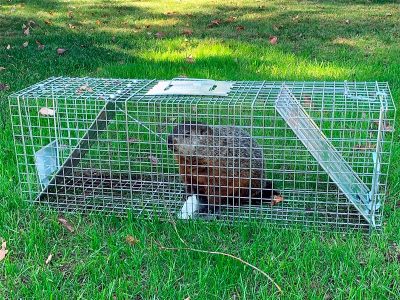

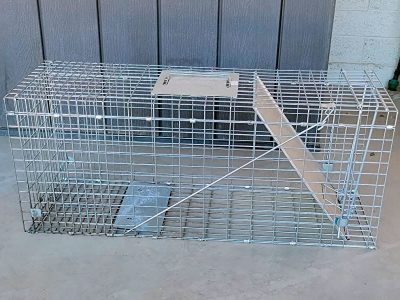

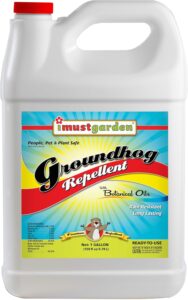

Illegal to relocate varmints/predators off your property in Vermont as well. There is no private property in the state big enough to not have the varmint come right back “home”.
In Virginia it is illegal to transport a live animal of your property.
How can you guys kill them it is horible
Easy to kill them. Toss the cage in a creek or pond. Problem solved.
My guess is that you don’t have a garden or a building that the groundhogs are destroying. When you have to live with the damage that they do, its easy to kill them.
Judge not, lest ye be judged
How do we reset a trap? A pro came and a only a squirrel is in it. Shoot I also touched it.
I live in Connecticut…My groundhog avoids
cantaloupe, broccoli, lettuce, and beans.
It feeds from what I observe is the nuts falling
from our oak tree…very frustrating